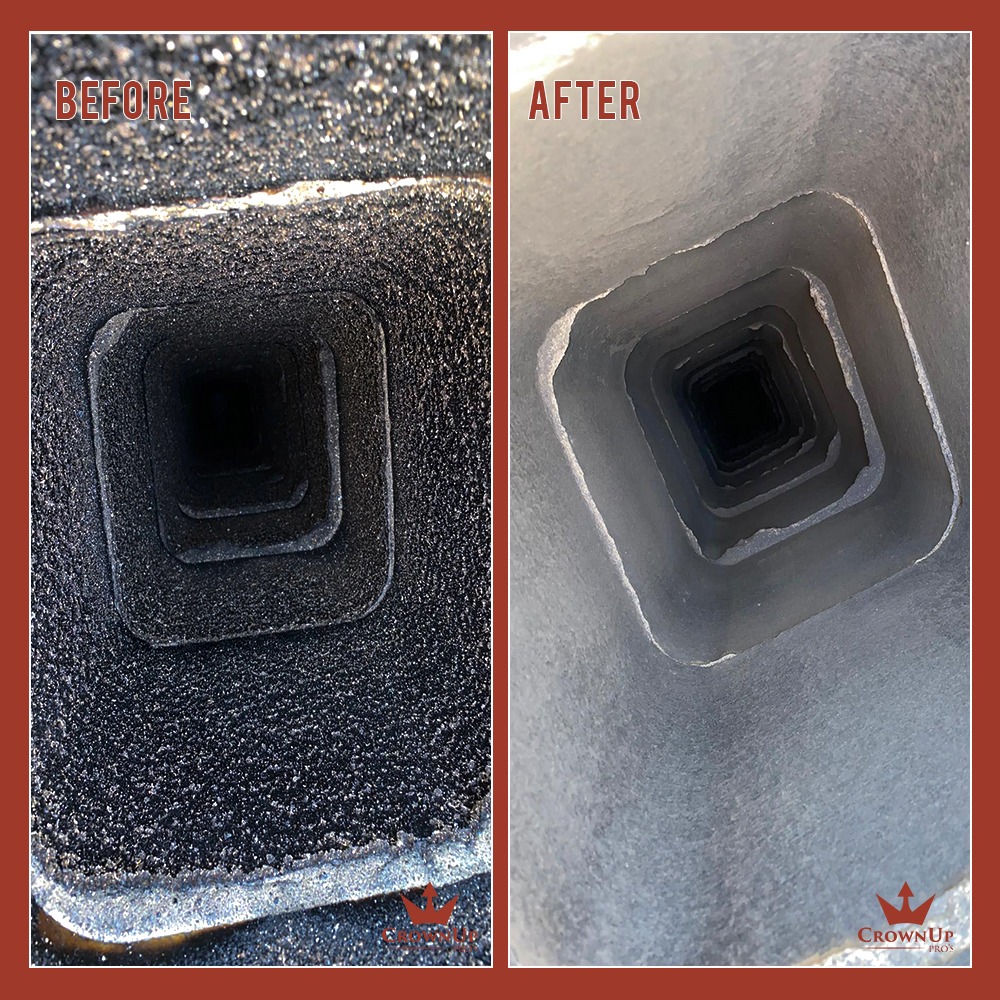Creosote: Causes and Concerns
Creosote is a natural byproduct of burning wood and coal, consisting of a combination of soot and tar. It’s highly flammable and appears as a black, sooty, and tar-like substance. Whenever wood or coal is burned, the resulting smoke carries hot gases, soot, particles, and creosote which then coats the interior flue system of a chimney. The presence of creosote is a significant concern; it is not a rare or harmless occurrence. It is an inevitable hazard faced by anyone using a wood or oil-burning appliance. Creosote can accumulate in three stages, each varying in amount and type of buildup on the flue walls. This byproduct is notoriously sticky and challenging to remove, often requiring more extensive treatment than a standard chimney sweep service to ensure its complete removal from your Denver home. The presence of creosote in your chimney is alarming not only because it is flammable, but also because it can cause serious obstructions in the venting system.

Creosote Buildup
While soot is primarily composed of carbon, creosote is mostly made up of tar—a sticky and highly flammable substance. Due to its adhesive qualities, creosote easily accumulates within a chimney, adhering to its parts, clogging the clean-out area, and posing a significant fire hazard. As creosote continues to build up, it can turn into a serious obstruction. When it reaches a stage 3 buildup, it becomes particularly difficult to remove, necessitating specialized cleaning techniques to ensure the safety and functionality of the chimney.
Stage 1 Creosote
In this initial stage, creosote is characterized by flaky black soot. This occurs when the air inside the flue is cold and quickly warmed by the heat of the fire. Properly warming your flue before starting a fire is crucial to prevent this buildup. Warming the flue can be done by holding lit cardboard or paper inside the firebox, directly under the flue. Typically, a basic chimney sweep service should be able to remove this type of creosote effectively.
Stage 2 Creosote
At this stage, creosote takes the form of shiny, hard black flakes. This happens when airflow is restricted within the chimney, causing smoke to linger and condense inside the flue. Removing this hardened tar-like substance is more challenging, but it can usually be addressed with a rotary loop cleaning tool.
Stage 3 Creosote
Also known as glazed creosote, this final stage occurs when the chimney is not cleaned regularly. As unaddressed creosote is exposed to continued high temperatures from burning wood, it begins to boil; the moisture evaporates, leaving behind a thick layer of hardened, concentrated fuel. Glazed creosote is particularly dangerous because it is highly flammable and can easily ignite, posing a severe risk of a chimney fire. It is also the most difficult to remove. Stage 3 creosote removal often requires professional intervention, as attempting to remove it without professional help can damage the chimney liner and increase the risk of a chimney fire. It’s crucial for homeowners to recognize the hazards posed by untreated creosote and the potential consequences of neglect.
